America Tears Down When William A. Clark Mansion Was Demolished To Build A Luxury Apartment Building
The William A. Clark House, known as “Clark’s Folly”, stood at 962 Fifth Avenue on the northeast corner of its intersection with East 77th Street on the Upper East Side of Manhattan, New York City.
The construction was completed in 1911 but was demolished in 1927 to build a luxury apartment building.
Who is William A. Clark?
William A. Clark was a wealthy American entrepreneur, involved with mining, banking, and railroads, as well as a politician.
Born in Pennsylvania, Clark journeyed west with his family to pursue law studies. He struck gold in the Montana Gold Rush of the 1860s but found true wealth in copper.
Alongside Marcus Daly and F. Augustus Heinze, he earned renown as one of Butte, Montana’s “Copper Kings.”
Clark’s legacy lives on in his 34-room mansion, now the “Copper King Bed and Breakfast,” a testament to his enduring impact on the region.
William A. Clark House
Clark commissioned the New York City firm of Lord, Hewlett & Hull to build this house in 1897, and the construction was finished in 1911.

The house had 121 rooms, 31 baths, 4 art galleries, a swimming pool, a concealed garage, and a private underground rail line to bring in coal for heat.
Grand Staircase

It was reported that Black spent about $7 million, equivalent to over $200,000,000 today, to build this mansion.
Clark spared no expense, importing materials from around the world. He bought a New Hampshire quarry, built a railroad for stone transport, and acquired a bronze foundry with 200 workers. Marble came from Italy, oak from Sherwood Forest, and parts of old French châteaux adorned the interior.

Exterior of Home
The house stood out with its impressive dimensions. Spanning 250 feet on 77th Street and 77 feet on Fifth Avenue, it rivaled the grandeur of Andrew Carnegie’s mansion. Its Fifth Avenue facade boasted three spacious granite bays, making it a notable landmark on the prestigious street.

The house on 77th Street boasted a long facade and a steep mansard roof. Its most remarkable feature was a towering four-sided structure with a three-story-high arch and an open pergola on top, reportedly visible from much of Central Park.
Interior
The nine-story house featured Turkish baths underground and laundry rooms on the top floor.
Greek marble columns adorned the interior, including a Numidian marble fireplace in the banquet room, measuring 15 feet across and embellished with life-size figures of Diana and Neptune.
The 121 rooms were adorned with medieval tapestries and artwork. The breakfast room boasted 170 intricately carved panels, each unique in design.
Tapestries
On the second floor, a grand rotunda of Maryland marble housed a statuary room, while a conservatory of brass and glass stretched nearby. Across from the rotunda was the marble-paneled main picture gallery, featuring a large chamber organ in the organ loft, the largest in America.

Organ
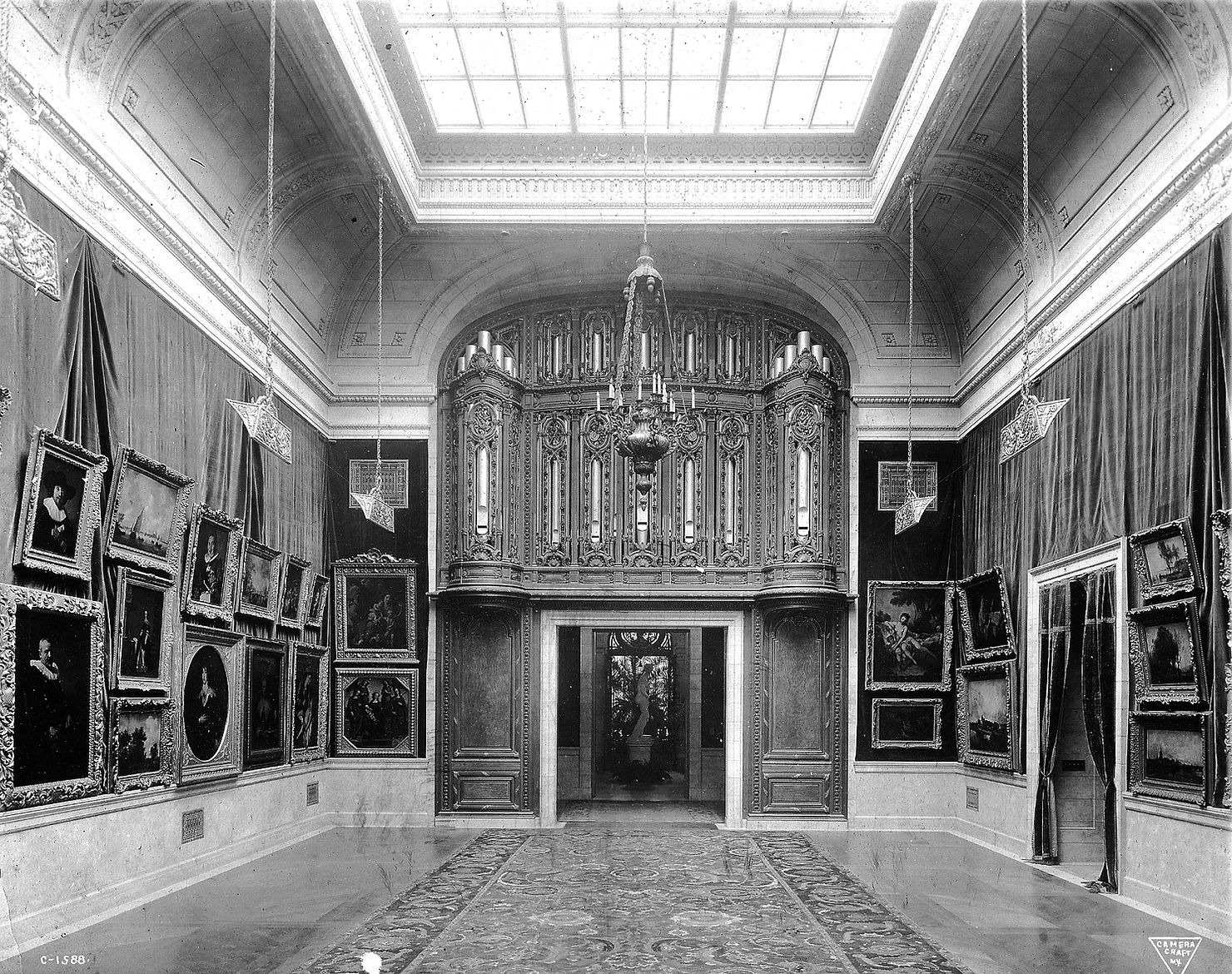
Gallery

Salon Doré
The Salon Doré, an intricate 18th-century room from the Hotel de Clermont in Paris, graced the house as its receiving room.
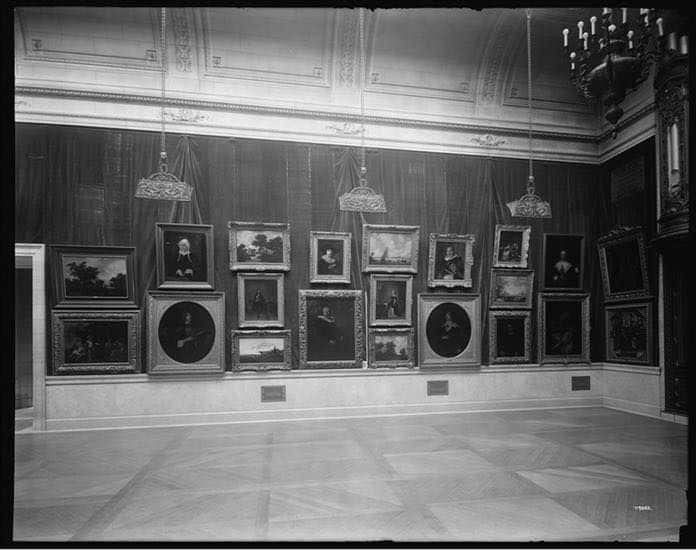


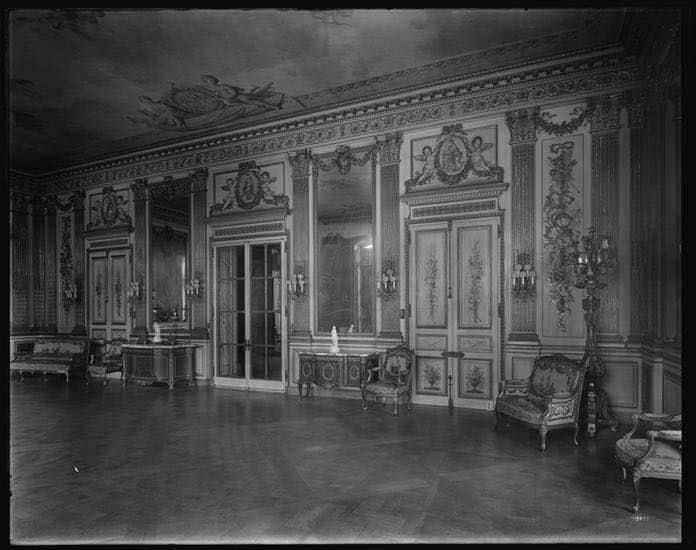
The house boasted 25 guest rooms, each with its own bath, and 35 servant’s quarters. Men’s rooms were to the east, while women’s quarters were to the west. Additionally, a Gothic library, stretching 90 feet in length, showcased a stunning beamed ceiling and a massive carved fireplace.
Library
Clark’s impressive art collection included pieces by renowned artists such as Delacroix, Millet, Corot, Constable, Boucher, and Daubigny.
He spared no expense, spending $200,000 (equivalent to $5,488,000 in 2019) on Gobelin tapestries once owned by Prince Murat and $350,000 (equivalent to $9,604,000 in 2019) on those from the Earl of Coventry’s collection.

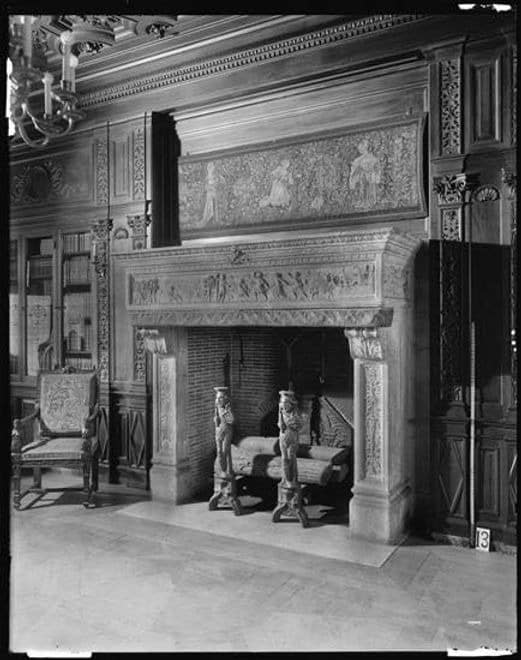

Dining Room
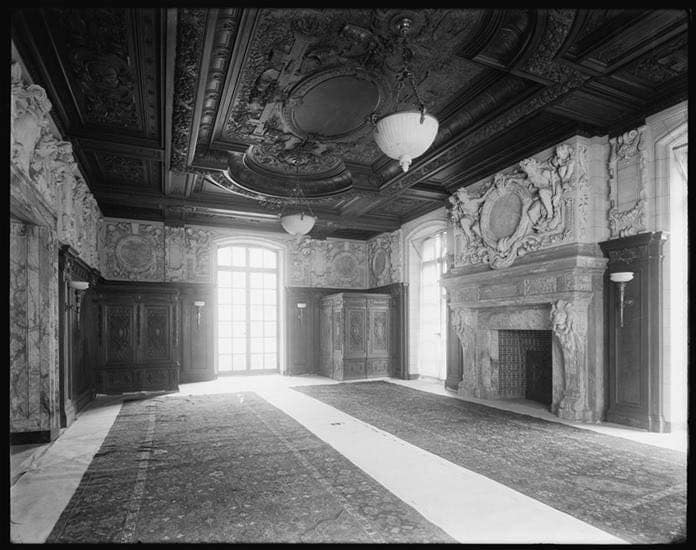
Petit Salon

Gothic Fireplace

Demise
After William A. Clark’s death in 1925, his widow and daughter, Huguette Clark, moved to 907 Fifth Avenue. They rented a full-floor apartment for about $30,000 annually.
The mansion was then sold to Anthony Campagna for $3 million in 1927 (equivalent to $43,736,000 in 2019) and demolished.
The current luxury apartment building at 960 Fifth Avenue now stands in its place. The Salon Doré was bequeathed to the Corcoran Gallery of Art in Washington, D.C.
More interior photos:

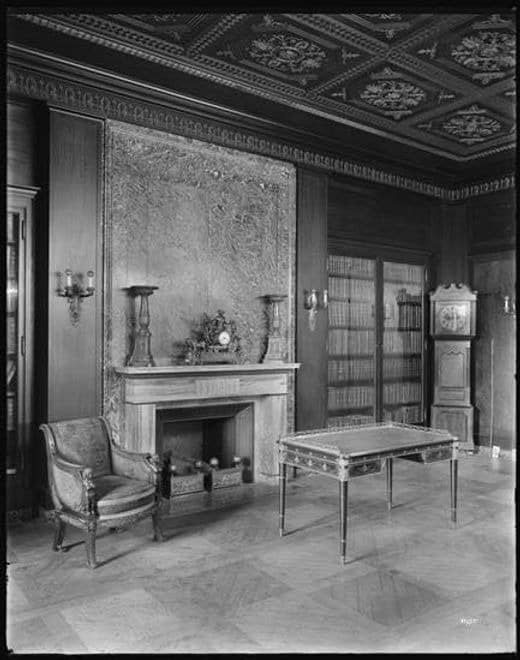




Faience Gallery (Tin-glazed pottery)


960 Fifth Avenue Today:
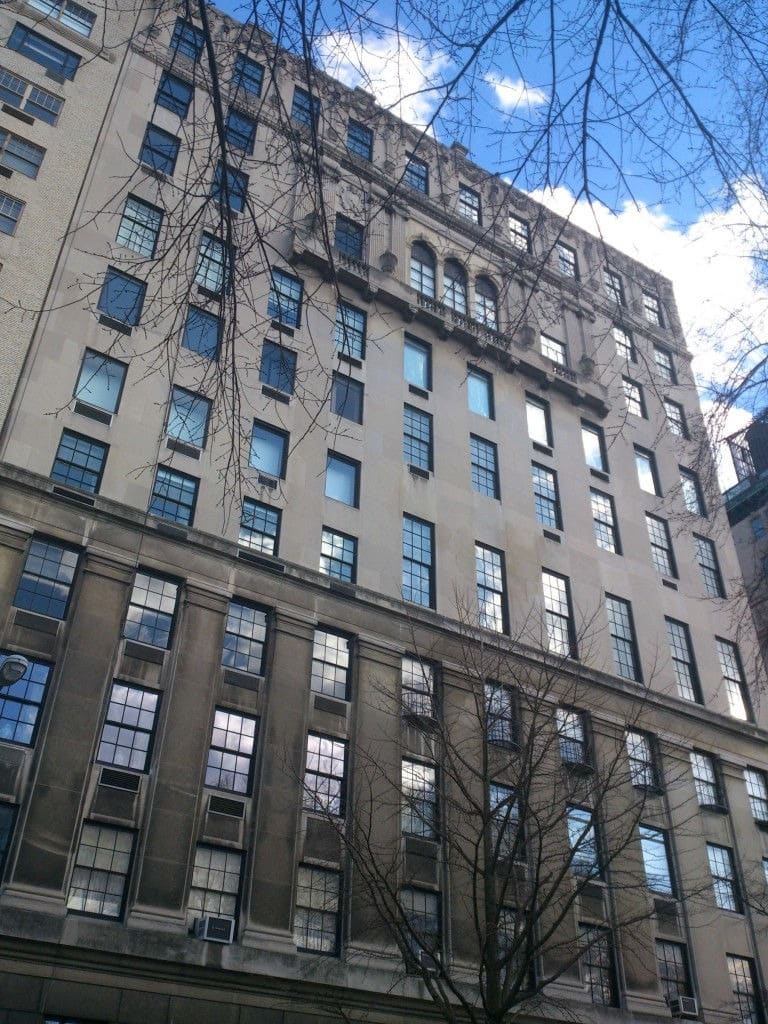

When Built in 1927


